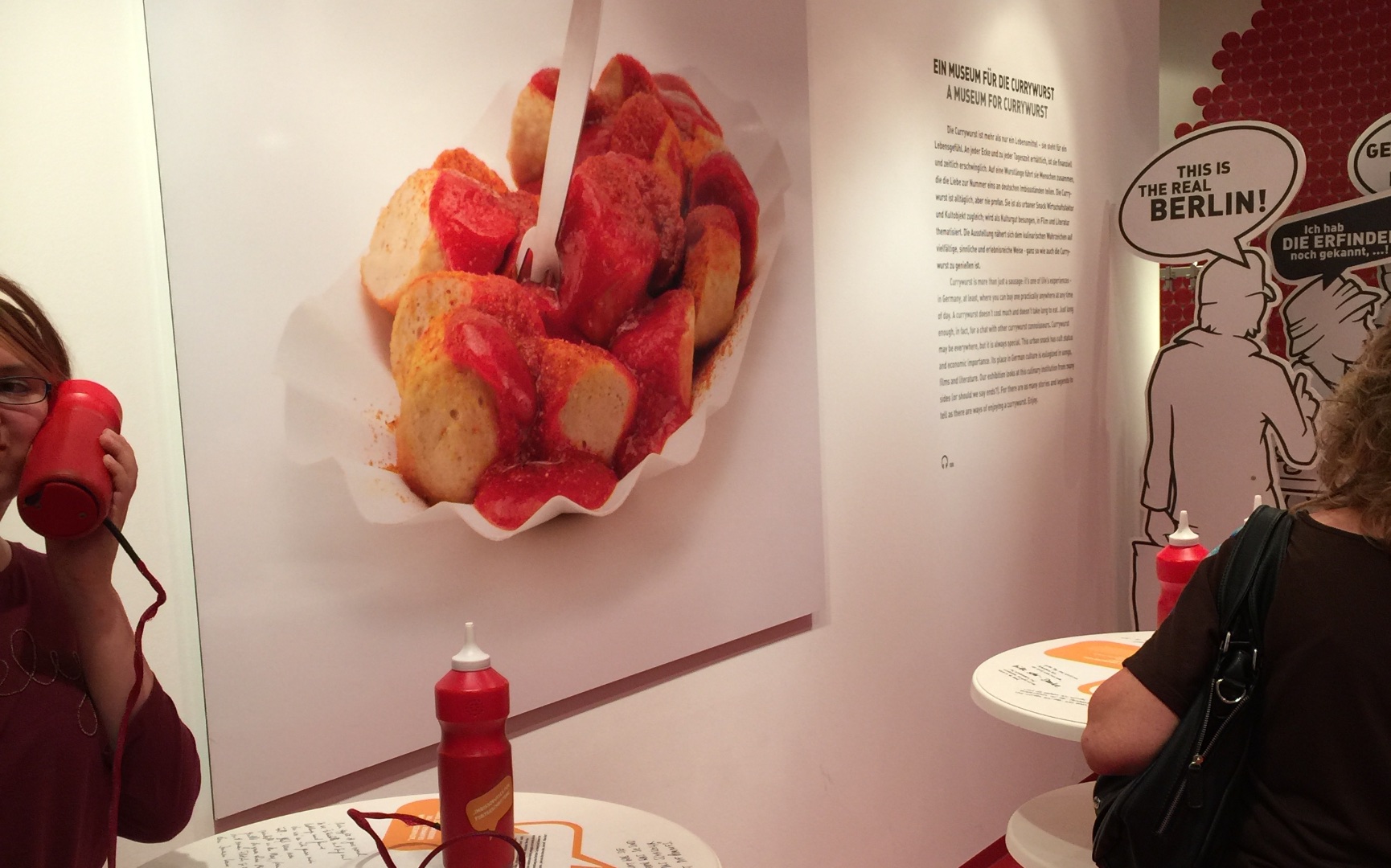Requiem for the Currywurst Museum
One of the most interactive, kid-friendly museums in Berlin tragically closed its doors one year ago: the Currywurst Museum. This is a requium for one of my favorite local museums. While the topic of the museum sounds almost like a joke—a museum dedicated to a hot dog smothered with ketchup and dusted with curry powder??—the display was genius. Sniff, peek, listen, pry, taste; visitors were encouraged to explore using all their senses, hardly noticing that they were also learning the surprisingly enthralling social history of the currywurst. Invented in Berlin and since then consumed in enormous quantity, the snack has indeed become symbolic. But currywurst is far more than a kitschy icon. Its birth was rooted in social conditions in Berlin in the 1950s, when many workers needed quick and cheap food on the go. The museum told this story in part using enlarged historical photos and text panels like speech bubbles (see pictures below). It also included a spice room, in which a whole wall was covered with colored panels with the names of curry spices on them; some panels were actually drawers to be opened to learn more. In the center of the room were five waist-high poles with lids for visitors to open (beckoned by a question mark), take a sniff, and guess what the spices were. Both these and the spice drawers were low to the ground, allowing kids to get in on the action! On one side of the room were tall wooden planks with questions written on one side, answers on the other, waiting for your hand to turn them. They focused on the ruffled paper plate that currywurst is almost always served on (hence the wooden material of the exhibit): is it environmentally friendly? Why not use normal dishes? What happens to the paper plate after it’s tossed out?
Finally, in the entrance/exit area were several white bar tables like those set up at currywurst stands. The ketchup bottles on each were actually audio sets you could put to your ear like a phone and hear stories from! On the table surfaces, text in a handwritten style like graffiti told you how currywurst is traditionally ordered by Berliners: you never say “currywursts” in the plural, and you only order the kind without skin! All in all, this museum was made with a lot of creativity and love. Rightly so for a food now competing for protected origin status! While the museum was apparently planned from the beginning to be temporary, I nonetheless mourn its passing acutely. Hopefully its rumored revival as a traveling special exhibition will retain some of its former glory.

